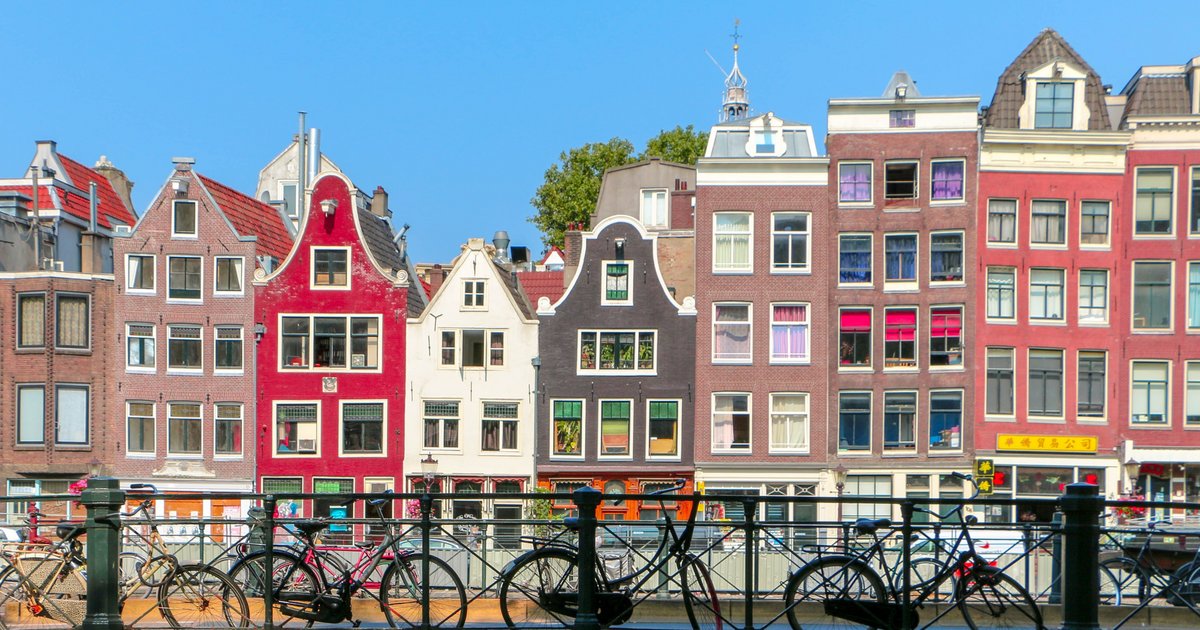Circular cities: The role of the sharing economy in parking
Circular cities: The role of the sharing economy in parking Sustainability Magazine


A Circular City: Promoting Sustainable Urban Development

A city that operates in a circular economy model, where resources are used more efficiently and waste is minimised, is called a circular city.
These places promote strategies like the sharing economy to recycle, reuse, and share goods and services with the goal to lessen the demand for new products and facilitate a more equitable distribution of assets.
Sharing platforms and initiatives provide collaborative and financial swapping opportunities and support community building and entrepreneurship. The sharing economy and the circular city concept provide a framework for sustainable urban development.
Prosperous circular cities incorporate various strategies, including renewable energy, green buildings, and urban agriculture.
Parking is also a critical aspect of sustainable transportation. Municipalities must integrate parking solutions that align with circular economy principles to create a more efficient and greener metropolis.
Why is Amsterdam a Circular City?
According to the city of Amsterdam’s website, Amsterdam provides all residents with a superior quality of life while respecting the earth’s natural resources and boundaries.
As a circular city, Amsterdam is adopting a more thoughtful approach to scarce new materials and changing how it produces and consumes.
Amsterdam aims to become a 100% circular economy by 2050, with interim targets of halving its use of new raw materials by 2030 and changing all public procurement to be circular by 2025. The city’s ambitions focus on three key sectors: food and organic waste streams, consumer goods, and the built environment.
The city plans to achieve this by:
- Shortening food chains to provide a robust regional food system
- Improving the processing of organic waste streams
- Promoting the use of recycled and reusable materials in construction
- Challenging the market to innovate through circular criteria
Amsterdam recognises that building a circular economy requires cooperation and actions from different industries.
The city collaborates with local organisations, residents, and businesses to promote a cleaner and more equitable world.
One initiative is transitioning from taxing labour to taxing raw materials and energy. These efforts involve not only the public and private sectors but also individual citizens who play an essential role in shaping a sustainable future.
Amsterdam has implemented many circular economy projects over the years, including:
- Stadspas Discount Card: This card provides low-income individuals access to discounted arts and cultural events, fitness services, and more.
- Green Dot: A programme that discounts clothing repairs at participating businesses for those with a Stadspas Discount Card.
- Buiksloterham: An Amsterdam-Noord neighbourhood that is being developed entirely on circular principles.
- OpenResearch Amsterdam: An online platform that facilitates collaboration and knowledge-sharing among researchers, policymakers, and citizens to address urban challenges and create innovative solutions for the city.
- Parking Initiatives: There are parking platforms that connect people looking for rental spots with those with a space to spare. C-Bèta is a circular hotspot exploring ways to turn underutilised parking lots into green spaces. The Amsterdam Smart City initiative is working on a Mobility as a Service (MaaS) project, which encourages a range of transport options to diminish the need for individual car ownership and parking.
Rethinking Parking for a Circular Economy
Parking is an essential aspect of urban planning and transportation. The circular economy allows us to reconsider how we approach parking by optimising the use of existing spots and creating new revenue streams and business models.
Shared parking marketplaces allow drivers to find and reserve parking spaces easily. Reserving parking can also help diminish traffic congestion, as smart software directs drivers to available spaces without having to hunt for spots.
Parking rental apps help reduce the costs and environmental impacts of building new parking infrastructure. By maximising existing parking spaces, cities can avoid the need to construct costly new parking facilities, which can consume significant resources and contribute to urban sprawl. Online marketplaces help cities optimise their land use, reduce congestion, and improve the quality of life for their citizens.
Online parking technology also benefits property owners by unlocking new revenue streams and creating opportunities for businesses to monetise their parking spaces. Those with empty spots can generate income and increase the value of their assets by listing unused parking on these platforms.
Parking marketplaces foster innovation and entrepreneurship as they create new opportunities for startups and businesses to develop products and services related to urban mobility and parking. These apps and websites drive economic growth and job creation.
The circular economy also provides opportunities to create new business models around parking. Several cities are exploring using vacant parking spaces for urban agriculture, solar energy generation, and other innovative uses. By repurposing these spaces, cities can create new financial opportunities while reducing the environmental impact of parking.
The sharing economy helps achieve a more sustainable and liveable environment by encouraging the use of existing, underutilised parking spots.
Repurposing empty spaces creates new business opportunities, eliminates the need for new infrastructure, and fosters an eco-friendlier urban setting.
SDGs, Targets, and Indicators
| SDGs | Targets | Indicators |
|---|---|---|
| SDG 11: Sustainable Cities and Communities | 11.6: By 2030, reduce the adverse per capita environmental impact of cities, including by paying special attention to air quality and municipal and other waste management | – Municipalities integrating parking solutions aligned with circular economy principles to create a more efficient and greener metropolis – Initiatives repurposing vacant parking spaces for innovative uses |
| SDG 12: Responsible Consumption and Production | 12.2: By 2030, achieve the sustainable management and efficient use of natural resources | – Amsterdam’s aim to halve its use of new raw materials by 2030 and change all public procurement to be circular by 2025 – Promoting the use of recycled and reusable materials in construction |
| SDG 13: Climate Action | 13.3: Improve education, awareness-raising, and human and institutional capacity on climate change mitigation, adaptation, impact reduction, and early warning | – Transitioning from taxing labor to taxing raw materials and energy to reduce environmental impact |
1. Which SDGs are addressed or connected to the issues highlighted in the article?
SDG 11: Sustainable Cities and Communities
The article discusses the concept of circular cities, which promote strategies like the sharing economy to recycle, reuse, and share goods and services. These cities aim to operate in a circular economy model, where resources are used more efficiently and waste is minimized. The article also mentions the importance of integrating parking solutions aligned with circular economy principles to create a more efficient and greener metropolis.
SDG 12: Responsible Consumption and Production
The article highlights Amsterdam’s efforts to become a 100% circular economy by 2050, with interim targets of halving its use of new raw materials by 2030 and changing all public procurement to be circular by 2025. Amsterdam aims to achieve this by shortening food chains, improving the processing of organic waste streams, and promoting the use of recycled and reusable materials in construction.
SDG 13: Climate Action
The article mentions Amsterdam’s initiative to transition from taxing labor to taxing raw materials and energy. This effort aims to reduce the environmental impact and promote climate action.
2. What specific targets under those SDGs can be identified based on the article’s content?
– SDG 11: Target 11.6 – By 2030, reduce the adverse per capita environmental impact of cities, including by paying special attention to air quality and municipal and other waste management.
– SDG 12: Target 12.2 – By 2030, achieve the sustainable management and efficient use of natural resources.
– SDG 13: Target 13.3 – Improve education, awareness-raising, and human and institutional capacity on climate change mitigation, adaptation, impact reduction, and early warning.
3. Are there any indicators mentioned or implied in the article that can be used to measure progress towards the identified targets?
– Municipalities integrating parking solutions aligned with circular economy principles to create a more efficient and greener metropolis can be an indicator of progress towards SDG 11, Target 11.6.
– Initiatives repurposing vacant parking spaces for innovative uses can also be an indicator of progress towards SDG 11, Target 11.6.
– Amsterdam’s aim to halve its use of new raw materials by 2030 and change all public procurement to be circular by 2025 can be an indicator of progress towards SDG 12, Target 12.2.
– Promoting the use of recycled and reusable materials in construction can also be an indicator of progress towards SDG 12, Target 12.2.
– Transitioning from taxing labor to taxing raw materials and energy can be an indicator of progress towards SDG 13, Target 13.3.
4. SDGs, Targets, and Indicators
| SDGs | Targets | Indicators |
|---|---|---|
| SDG 11: Sustainable Cities and Communities | 11.6: By 2030, reduce the adverse per capita environmental impact of cities, including by paying special attention to air quality and municipal and other waste management | – Municipalities integrating parking solutions aligned with circular economy principles to create a more efficient and greener metropolis – Initiatives repurposing vacant parking spaces for innovative uses |
| SDG 12: Responsible Consumption and Production | 12.2: By 2030, achieve the sustainable management and efficient use of natural resources | – Amsterdam’s aim to halve its use of new raw materials by 2030 and change all public procurement to be circular by 2025 – Promoting the use of recycled and reusable materials in construction |
| SDG 13: Climate Action | 13.3: Improve education, awareness-raising, and human and institutional capacity on climate change mitigation, adaptation, impact reduction, and early warning | – Transitioning from taxing labor to taxing raw materials and energy to reduce environmental impact |
Behold! This splendid article springs forth from the wellspring of knowledge, shaped by a wondrous proprietary AI technology that delved into a vast ocean of data, illuminating the path towards the Sustainable Development Goals. Remember that all rights are reserved by SDG Investors LLC, empowering us to champion progress together.
Source: sustainabilitymag.com

Join us, as fellow seekers of change, on a transformative journey at https://sdgtalks.ai/welcome, where you can become a member and actively contribute to shaping a brighter future.







